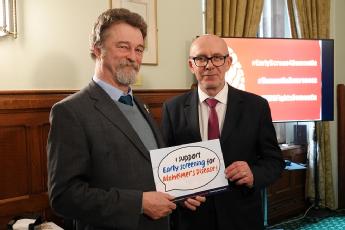WMG News - Latest news from WMG
WMG Professors become Fellows of the Royal Academy of Engineering
Two Professors at WMG at the University of Warwick have been elected as Fellows of the prestigious Royal Academy of EngineeringLink opens in a new window.
Professor Claire DavisLink opens in a new window, Head of Advanced Steel Research Centre; and Professor Mark WilliamsLink opens in a new window, Head of the Metrology and Visualisation Research Group, at WMG, have been elected as part of a group of 71 leading figures in the field of engineering and technology.
WMG, have been elected as part of a group of 71 leading figures in the field of engineering and technology.
The group consists of 60 Fellows, six International Fellows and five Honorary Fellows, each of whom has made exceptional contributions to their own sector.
Each Fellow has been involved in pioneering new innovations, leading progress in business or academia, providing high level advice to government, or promoting wider understanding of engineering and technology.
The new Fellows will be formally admitted to the Academy at a special ceremony in London on 27 November, when each Fellow will sign the roll book.
In joining the Fellowship, they will lend their unique capabilities to achieving the Academy’s overarching strategic goal to harness the power of engineering to create a sustainable society and an inclusive economy for all.
 Professor Davis said: “I am very honoured to have been elected a Fellow of the Royal Academy of Engineering. It is an exciting and dynamic time for the global steel industry and I look forward to working with the Royal Academy in promoting clean technologies for the future.”
Professor Davis said: “I am very honoured to have been elected a Fellow of the Royal Academy of Engineering. It is an exciting and dynamic time for the global steel industry and I look forward to working with the Royal Academy in promoting clean technologies for the future.”
Professor Mark Williams said: “I’m honoured to be elected as a Fellow of the Royal Academy of Engineering and am extremely grateful to colleagues across the country who have seen fit to elect me.
“It’s a long way from my time as an apprentice to the Royal Academy. I’d like to thank my colleagues at Warwick who have supported me over my career here and look forward to working with the other Fellows.”
Dr John Lazar CBE FREng, President of the Royal Academy of Engineering, says: “Our new Fellows represent some of the most talented people in the world of engineering and are taken from the ranks of those who are aiming to address some of our most critical problems.
“We are proud to say that many of our newly elected Fellows have come from underrepresented groups in engineering and related sectors and we hope this helps to tackle some of the issues around a lack of diversity within the profession.
“There is ample evidence that a wider pool of ideas and experiences helps to improve decision-making and develop novel solutions to global challenges.”
See the complete list of Fellows elected here: Royal Academy of Engineering Fellows 2024 (raeng.org.uk)Link opens in a new window
Wayve and WMG launch DriveSafeAI
WMG at the University of Warwick and WayveLink opens in a new window, a leader in Embodied AI for autonomous driving, have launched the DriveSafeAI microsite - a dedicated platform to share insights, research, and tools focused on AI safety assurance in assisted and automated driving technology.
The new microsite, Drive-Safe.aiLink opens in a new window, is part of the broader DriveSafeAI initiative and serves as a hub for industry professionals, researchers, and policymakers. Through this platform, Wayve and WMG will share information about novel safety validation methods to give regulators confidence in AI used in assisted and automated vehicles (AV). DriveSafeAI focuses on four pillars of technical AI safety assurance, covering scenario generation, architecture, model evaluation, and sim validation.
The DriveSafeAI projectLink opens in a new window is part of the Centre for Connected and Automated Vehicles’ (CCAV)
Commercialising CAM Supply Chain Competition (CCAMSC). This programme, aimed at advancing connected and automated mobility (CAM), is funded by CCAV - a joint initiative between the Department for Business and TradeLink opens in a new window, and the Department for TransportLink opens in a new window. It is delivered in partnership with Innovate UKLink opens in a new window and ZenzicLink opens in a new window.
Dr Sarah Gates, Director of Public Policy, Wayve explained: “Regulators need to have confidence in how AI is used in assisted and automated driving, which is why we need clear safety validation methods. DriveSafeAI is a model for developing evidenced-based safety frameworks that can build regulator and stakeholder confidence, driving innovation while ensuring the highest safety standards. This balanced approach enables safe technology development that will lead to safer roads and a more robust global AV market.”
 Professor Siddartha KhastgirLink opens in a new window, Head of Safe Autonomy, WMG, the University of Warwick said: “The use of AI in safety-critical applications like automated driving poses a huge challenge for the automotive industry. Solving this requires broad collaboration between industry, academia, and policymakers. Through DriveSafeAI, partnering with a leading embodied AI organisation like Wayve, WMG can create a robust and novel safety approach to AI while enabling scalability and innovation. We are generating the scientific evidence to underpin industry-wide standards and international regulations for the safety of AI, building confidence in the AV ecosystem.”
Professor Siddartha KhastgirLink opens in a new window, Head of Safe Autonomy, WMG, the University of Warwick said: “The use of AI in safety-critical applications like automated driving poses a huge challenge for the automotive industry. Solving this requires broad collaboration between industry, academia, and policymakers. Through DriveSafeAI, partnering with a leading embodied AI organisation like Wayve, WMG can create a robust and novel safety approach to AI while enabling scalability and innovation. We are generating the scientific evidence to underpin industry-wide standards and international regulations for the safety of AI, building confidence in the AV ecosystem.”
Wayve and WMG remain committed to advancing automated driving through rigorous safety protocols and transparent research. Over the next year, the partners will regularly update the microsite with new findings as they progress their research.
For more information and to follow updates on this project, visit Link opens in a new windowhttps://drive-safe.ai/Link opens in a new window.
Representatives from British Malaysian Chamber of Commerce visit WMG
 Dr Kogila BalakrishnanLink opens in a new window, WMG’s Director of Client and Business Development (Southeast Asia), was pleased to welcome guests from the British Malaysian Chamber of Commerce on Monday (9th September).
Dr Kogila BalakrishnanLink opens in a new window, WMG’s Director of Client and Business Development (Southeast Asia), was pleased to welcome guests from the British Malaysian Chamber of Commerce on Monday (9th September).
The delegation was made up of 15 Malaysian government officials on the JPA-BMCC Management Development ProgrammeLink opens in a new window.
The officials were particularly interested to find out more about research projects and education programmes in relation to digital technology and energy transition.
After meeting with Dr Balakrishnan and Hopi Sen, WMG’s Director of Policy, the group headed to the Energy Innovation Centre where they heard more about WMG’s world-leading energy and battery technology research.
The delegation then enjoyed a guided tour of the engineering hall and the Centre for Imaging, Metrology and Additive Technologies (CiMATLink opens in a new window), in WMG’s International Manufacturing Centre.
Dr Kogila Balakrishnan, WMG’s Director of Client and Business Development (Southeast Asia) said: "It was a pleasure to welcome the delegation and showcase WMG's strengths in digital technology and energy transition.
“We are excited about the possibilities for collaboration that may arise from this engagement, particularly in fostering innovation and developing skills for the future."
Find out more about WMG’s education programmes here: Study | WMG | University of WarwickLink opens in a new window
Find out more about WMG’s research capabilities here: Research | WMG | University of WarwickLink opens in a new window
Celebrating 75 years of the Crop Centre’s pioneering agriculture research
The University of Warwick is celebrating 75 years of plant science research at its internationally recognised Crop Centre – the UK’s leading research facility for vegetable growers.
The Crop Centre, based at The University of Warwick’s Innovation Campus, Stratford-upon-Avon, was founded 75 years ago as the National Vegetable Research Station (NVRS) to address post-war pressure for food production.
Research has continued on the site ever since, now incorporated into the University’s School of Life Sciences (SLS).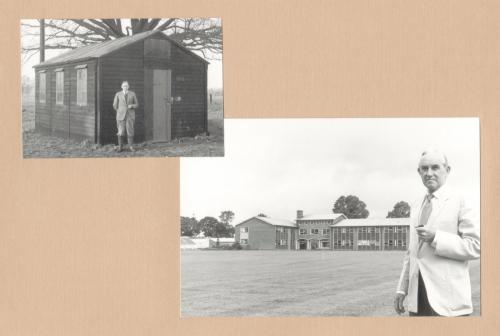 With climate change challenging crop growth and leading to supermarket shortages, the work of the Crop Centre is as important as ever.
With climate change challenging crop growth and leading to supermarket shortages, the work of the Crop Centre is as important as ever.
It continues to produce world-class research, contributing to sustainable agricultural practices for the future. It aims to equip the industry with innovative solutions, alongside providing a leading training and education facility.
Professor Rosemary Collier, SLS, University of Warwick: “Warwick Crop Centre is home to both the UK Vegetable Gene Bank, which is a globally important collection of natural genetic variation, and the UK’s Vegetable Genetic Improvement Network (VeGIN) which makes this genetic information available to breeding companies.
“Other research priorities include providing sustainable solutions to pest and disease control for fresh produce growers. We are also committed to raising awareness of our work in the community, by hosting briefings in the shape of popular webinars.”
A newly announced initiative is Warwick Agri-Tech, which combines the Crop Centre’s expertise in life sciences with world class engineering at WMG at The University of Warwick. This will drive the development of technologies that are needed to support the future of agriculture.
Alicia Feledziak, Business Development Manager for Warwick Agri-Tech, said: “Warwick Agri-tech’s great strength is its ability to transfer WMG’s advanced engineering capabilities in automation, robotics and AI systems, which have been developed through decades of working with industry in sectors like Aerospace, Automotive and Rail, into the agricultural sector. Together with the School of Life Sciences, we are able to move these technologies out of ordered factories and into the ever-changing and often harsh environments of agriculture.
“Our goal is to de-risk innovation for industry, to support the development of a sustainable and resilient food system. We are excited to be working closely with growers, technology developers and government to drive change for the industry.”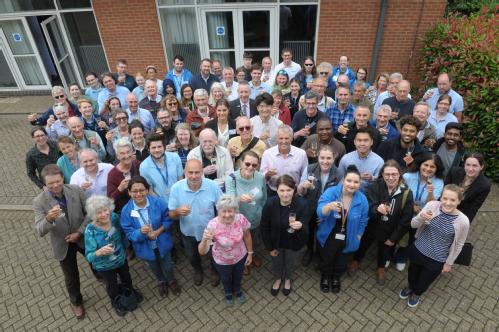
The Crop Centre will also pioneer genetic breeding, which will enable new varieties of fresh vegetable crops to be bred that are adapted to the changing climate and changing technologies.
Professor Richard Napier, SLS, University of Warwick, added: “We’re working for the next generation. Our research is de-risking crop production as we adapt to climate change, our education is equipping young people with practical knowledge about the challenges. We are providing the industry with a new generation of critical thinkers able to help solve the problems of the future.”
Advanced technology could give us ‘personalised’ hip replacements
‘Personalised’ hip replacement surgery might be just what the doctor ordered for people with hip arthritis – according to new research. Using advanced technology from other industries such as automotive and manufacturing, researchers are driving medical advancement.
The result is tailored hip replacements, as each person moves their hips in slightly different ways. At the moment, replacements are based on a ‘normal’ hip rather than being specifically designed for the patient.
In the study by WMG at The University of Warwick, in collaboration with University Hospitals Coventry and Warwickshire (UHCW) NHS Trust and Corin Group, researchers revealed this pioneering approach to hip replacements could improve patient outcomes and surgery success rates.
More than 100,000 people in the UK undergo hip replacements each year, according to the NHS – commonly due to arthritis, a disease of the joints which causes significant pain.
The new study analysed longstanding problems in hip replacement surgery: on the specific range of motion needed in a replacement and how the value of the personalised surgery could be calculated before any operation.
In the study, Lead Researcher Dr Arnab Palit, Assistant Professor at WMG at The University of Warwick, and his team combined real-life and computer models to compare simulated and real hip motions.
This demonstrated that certain hip motions can be easily and accurately calculated using state-of-the-art computer simulations based on CT scans of the patient’s hip joint, closely mirroring real hip motions.
This advancement could enable surgeons to plan hip surgeries based on patient-specific target hip motions, rather than relying on population norms or arbitrary 'normal' values. This personalised approach is particularly valuable for patients who do not fall within these average values, ensuring that pre-surgical planning is truly individualised and likely to be more effective.
Using these tailor-made hip replacements could improve the success of operations, making them ‘right at the first time’. Surgeons may be able to put the artificial hip in just the right spot based on the pre-operatively calculated personified target hip motion.
This could reduce the chances of any clinical problems later on, minimising the risk of revision surgery. This will also help to improve the recovery time of patients, while also reducing additional costs and labour to the NHS.
Dr Palit said: “This research shows a big step forward in hip replacement planning. By using computer simulations based on a patient's hip shape from CT scans, we can predict certain hip movements accurately. During surgery, these predicted movements can guide them to place implants in the best positions for each patient.
“So, instead of using average measurements, we're customising the surgery to fit each person perfectly, leading better surgery. Further research will be necessary to fully explore its potential to utilise it for NHS patients.”
Professor Richard King, Clinical Orthopaedic Surgeon at UHCW and the clinical lead of the project, commented: “The hip replacement has been called ‘the operation of the century’.
“As surgeons, we are constantly looking to make it better and more reliable. This work we have done with WMG could help us to do exactly this, by showing us how to tailor the operation precisely for each individual patient.”
Dr Christopher Plaskos, Vice President, Global Clinical Innovation at Corin Group added: “Corin is proud to support this research aimed at predicting the true range of clinical motion of a hip joint from pre-operative CT and hip motion simulation. It’s research like this that will shape the future of hip planning, leading to truly personalised hip replacement.”
Find out more about WMG’s scanning capabilities here: Metrology and 3D Imaging (warwick.ac.uk)
How the cookie crumbles: University of Warwick X- ray tech used to reveal the secrets of baking the perfect biscuit
WMG at the University of Warwick and Cadbury have used powerful X-ray scanning equipment to uncover the secrets of how the structure of biscuits, which is essential for the perfect ‘crunch’, forms.
The discoveries have been released to mark National Biscuit Day this Wednesday, 29th May. Biscuits are the UK’s favourite sweet treat, with the average person in the UK eating around six a week.
 WMG researchers scanned biscuits in a bespoke oven as they baked, imaging the inside of the biscuit to reveal how the porous structure, essential for the perfect ‘crunch’, forms during the baking process.
WMG researchers scanned biscuits in a bespoke oven as they baked, imaging the inside of the biscuit to reveal how the porous structure, essential for the perfect ‘crunch’, forms during the baking process.
Associate Professor at WMG’s Centre for Imaging, Metrology and Additive Technologies, Jay Warnett, said that this was just the beginning for the technology:
“Joining forces with Cadbury, we're cracking the code to the perfect biscuit. Through our X-rays, we're helping uncover the ideal baking time, thickness, and recipe for the ultimate eating experience”.
“But our research doesn't stop there; we're diving deeper into the world of biscuits and baked food and hope to continue working with Cadbury for a long time to come”.
Researchers at WMG, who were approached by Cadbury, constructed an oven from scratch inside an X-ray CT scanner – a similar machine to what you might find in a hospital.
Using the latest algorithms, the imaging process was sped up to scan the biscuit every 20 seconds throughout the baking process. When put together, the WMG and Cadbury teams could observe the biscuit baking over time.
Principal Scientist at Cadbury, Thomas Curwen, is excited for the future of biscuit development:
“The latest algorithms have allowed us to watch and quantify the baking process inside the biscuit in greater detail than ever before. This capability will help us determine the function of different ingredients in more detail and how the structure that forms controls the eating experience. I am excited by what we can learn and how this will help us deliver the great tasting biscuits of the future.”
The research process, which was led by Dr Warnett and Research Fellow Dr Evelien Zwanenburg, has proved the concept possible, and is therefore likely to be the first step before a larger project later this year.
This future work aims to extend the work across other biscuit varieties and baked goods.
WMG researchers present new Alzheimer’s widespread screening device at parliament
On Wednesday (24th April), WMG at the University of Warwick’s Professor Alan Chalmers, and his research team, held a parliamentary drop-in session, hosted by Sir Jeremy Wright, MP for Kenilworth & Southam and Vice-chair of the all-party parliamentary group on Dementia.
Scientists at WMG, have been working on ground-breaking medical screening for neurodegenerative conditions, with a particular focus on Alzheimer’s disease. The research is based on growing evidence that people suffering with such diseases can lose their sense of smell and taste, many years before other symptoms, such as memory loss, become apparent.
An early diagnosis is critical for those with the disease. New drug technology can slow the progress of Alzheimer’s, but only if detected early enough.
Together with research partners including the NHS, Neurosaliance, and Superlunary Labs, the scientists updated policy makers on the progress of a National Engagement Framework for facilitating screening across the county and demonstrated a new working prototype of their flavour perception testing system.
Matt Western, MP for Leamington and Warwick, said: “We should strive for equality in dementia diagnosis across the UK. It was great to meet Professor Chalmers and his team from WMG. They are working with Superlunary Labs to develop flavour perception technology, for wide-spread non-invasive screening, which could help us achieve that goal.”
The Framework was piloted last year and resulted in data being collected at a number of venues across the country facilitated by MP’s constituency offices.
The plan is for the easy-to-use, low-cost perception testing system to be deployed in pharmacies, care homes and GP surgeries across the country.
This will allow people to measure their own flavour perception ability without the need for a GP appointment. The results will be sent to GPs via a mobile app, and those who perform poorly can then be referred for further tests.
WMG’s Professor Alan Chalmers, who is leading the research said: “In this simple screening test, people are given different flavours to smell and taste. They then, for example, determine which is sweeter, less astringent or smells more of lemon. It’s an easy, non-invasive test which can be rolled out to people quickly right across the UK. It was great to have an opportunity to share our Framework with policy makers.
“At the moment, people who present with symptoms of memory are referred for MRI scans and spinal fluid tests to confirm a diagnosis. By the time memory loss occurs things are often too late; pioneering drug treatments only perform well in the early stages of degeneration. MRI scans and spinal fluid tests are currently not done before there is an indication of the disease as they are incredibly invasive, can cause distress and are expensive and time-consuming for the NHS. Failure of the flavour test can give the necessary early indication.”
Marcus Jones MP for Nuneaton, added: “It was wonderful to meet the team from WMG and Superlunary Labs working to develop flavour perception testing as a method of early screening for neurodegenerative conditions. Work like this is essential for tackling the growing problem of dementia in the UK.”
Read more about WMG’s Visualisation research here: Visualisation Group (warwick.ac.uk)
WMG Professor leads next phase of key research project
In 2023, WMG at the University of Warwick, received a share of £19 million from the Faraday InstitutionLink opens in a new window - the UK’s flagship institute for electrochemical energy storage research.
The funding was allocated to four key battery research projects aimed at delivering an impact for the UK. These existing projects across three different research areas - next generation cathode materials, electrode manufacturing and sodium-ion batteries - have been reshaped to focus on the areas with the greatest potential for success.
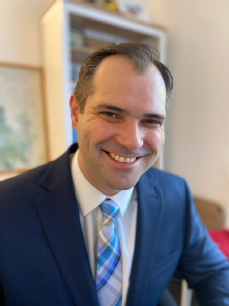 WMG took a key role in two of the four, reshaped projects entitled FutureCat and Nextrode. FutureCat is now entering its second phase with Louis Piper, WMG’s Professor of Battery Innovation, appointed as the new Principal Investigator (PI).
WMG took a key role in two of the four, reshaped projects entitled FutureCat and Nextrode. FutureCat is now entering its second phase with Louis Piper, WMG’s Professor of Battery Innovation, appointed as the new Principal Investigator (PI).
The battery cathode research project, focuses on understanding novel redox processes as a route to stabilise both high capacity, high performance, nickel rich and emerging cathodes and scalable designer morphologies. The next phase of the project will build on its success in developing reliable, scalable routes to deliver a longer lifetime, high-energy/power cathodes, essential for electric vehicles.
Professor Louis Piper explains: "Professor Cussen's leadership on FutureCat has resulted in significant advancements in Ni-rich cathodes. We are looking forward to continuing the pace of Ni-rich cathode innovation and development in phase II of the project. I am pleased that she will still work closely with the team."
James Gaade, Research Programme Director, commented: “We extend enormous thanks to Professor Serena Cussen for her engaging and collaborative leadership of the FutureCat project since its inception in 2019. In Professor Louis Piper the project has an accomplished research leader to take over the reins. WMG, University of Warwick has always been a key university partner for the Faraday Institution and is currently a member of five of our cross-disciplinary, multi-university battery research projects. We’re delighted to see the University becoming project lead for the first time.”
Professor Serena Cussen, former Principal Investigator of FutureCat, commented: “It has been the greatest privilege to lead the UK Faraday Institution's consortium on next-generation cathodes, FutureCat, as principal investigator since its inception in 2019.
“At the heart of our success has been a shared research vision and a culture of collaboration, which has seen our consortium deliver deep scientific insights on next-generation cathode discovery, development and scale-up as well as exciting partnerships with industry colleagues.
“While I am sad to leave the role of PI of FutureCat, I am delighted to see my friend and colleague Professor Louis Piper take over the leadership of this fantastic project. I have no doubt this is a project which will continue to go from strength-to-strength, and I look forward to collaborating with the FutureCat family of researchers.
Read more about FutureCat here: https://futurecat.ac.uk/
University of Warwick technology helps solve over 300 murder cases
Over 300 murder cases have been solved over the last decade using cutting edge 3D imaging technology from WMG at the University of Warwick.
The technology, which can produce images with resolutions 1000 times more detailed than a hospital CT scan, has been used in murder cases by 30 police forces across the UK to view injuries in incredibly high detail.
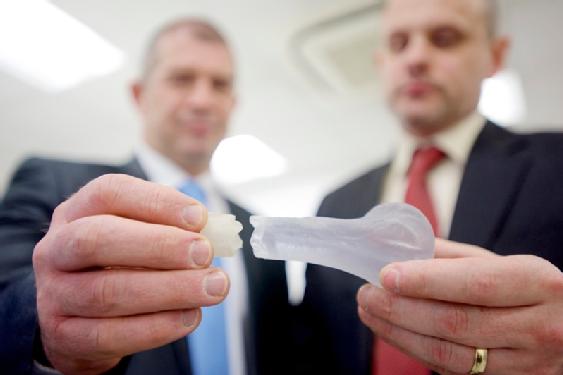 This has helped to convict the guilty, as well as prove innocence. The technology is so advanced that it can show the difference between a wound inflicted with force, versus the typical profile of one delivered by natural causes. Cases have included strangulation, stabbing, blunt force trauma and bone fractures.
This has helped to convict the guilty, as well as prove innocence. The technology is so advanced that it can show the difference between a wound inflicted with force, versus the typical profile of one delivered by natural causes. Cases have included strangulation, stabbing, blunt force trauma and bone fractures.
The technology was first used in 2014 when West Midlands Police approached WMG’s Professor Mark Williams. They asked him to help with their investigation into the grisly Birmingham canal murder, where a body was discovered in a suitcase in a Birmingham canal.
Professor Williams comments: “We were able to help the Police by examining a charred piece of evidence thought to contain human bone.
“We discovered that it was a perfect jigsaw fit to another piece of bone in the suitcase, and, using the very high-resolution scanning technology, we were able to show the tool marks on both pieces in micro scale (one 50th of a millimetre).
“These matched the characteristics expected for the type of saw the offender had disposed of, alongside the victim.”
This microscopic level of detail led to the conviction of murderer Lorenzo Simon, who was jailed for 19 years.
This marked the start of a productive research partnership for WMG with West Midlands Police, who have now used the technology in dozens of murder cases. Now, 30 police forces in the country have used the cutting-edge technology.
The technology has also been used in other high-profile cases, including to rule out foul play. In one case where a 64-year-old had fallen, 3D model printing of the skull of the deceased showed exact matches with the geometry of the doorhandle, suggesting a fall. This resulted in the cause of death being ruled as accidental.
The high-resolution scans were also used to help convict Tipton murderers Nathan Maynard-Ellis and David Leesley, who dismembered their victim. The scans helped prove the deliberate nature of their behaviour after their crime, including the direction and variation of their cuts. Both were convicted and will serve a life sentence.
Read more about WMG’s Metrology and 3D Imaging research here: Metrology and 3D Imaging (warwick.ac.uk)
New award wins shine light on the importance of industry-university partnerships
WMG at the University of Warwick has secured funding, alongside other departments at the University, for eight new Innovate UK funded Accelerated Knowledge Transfer (AKT) projects, designed to rapidly inject innovation capacity within UK industry.
With over 500 applications and just a third of projects awarded a slice of the £5 million, WMG was successful because of its strong industry ties and robust business relationships.
Like regular Knowledge Transfer Partnerships, which have been funded by successive governments for almost 50 years, AKT projects provide organisations with a specialist academic team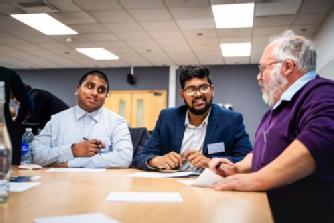 including a postgraduate student. The WMG team will:
including a postgraduate student. The WMG team will:
- Identify innovation blockers
- Evaluate an innovation concept
- Find solutions to immediate as well as longer term challenges
- Accelerate new thinking and processes
- Develop new business models and expand capacity
One WMG industry partner set to benefit is Jaltek Systems Ltd. The team at Jaltek will be using the funding to continue with the integration of robotics technology into processes.
Andy Dowling, Head of WMG’s SME Business Development team said: "These awards are testament to the University's continued drive and success in establishing collaborative relationships with industry through the Knowledge Transfer Partnership scheme. As only 35% of the AKT applications were awarded Innovate UK funding, we are proud of our achievements and are looking forward to working on this set of exciting projects."
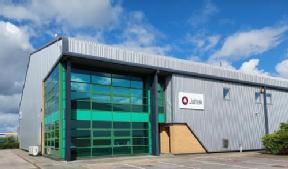 Steve Blythe of Jaltek Systems Ltd said: “We are continually looking to improve productivity through training, improved processes, and automation. We saw good practice using cobots (collaborative robots) in other businesses and reached out to WMG to support our plans. The funding for the AKT will help us further our activity in this area.”
Steve Blythe of Jaltek Systems Ltd said: “We are continually looking to improve productivity through training, improved processes, and automation. We saw good practice using cobots (collaborative robots) in other businesses and reached out to WMG to support our plans. The funding for the AKT will help us further our activity in this area.”
The 16-week long projects will start from April 2024 and WMG will be recruiting talented graduates to join the team. For more information contact: wmgsme@warwick.ac.uk.
To find out more about WMG’s SME Programmes visit: https://warwick.ac.uk/fac/sci/wmg/for-industry/sme-support/

